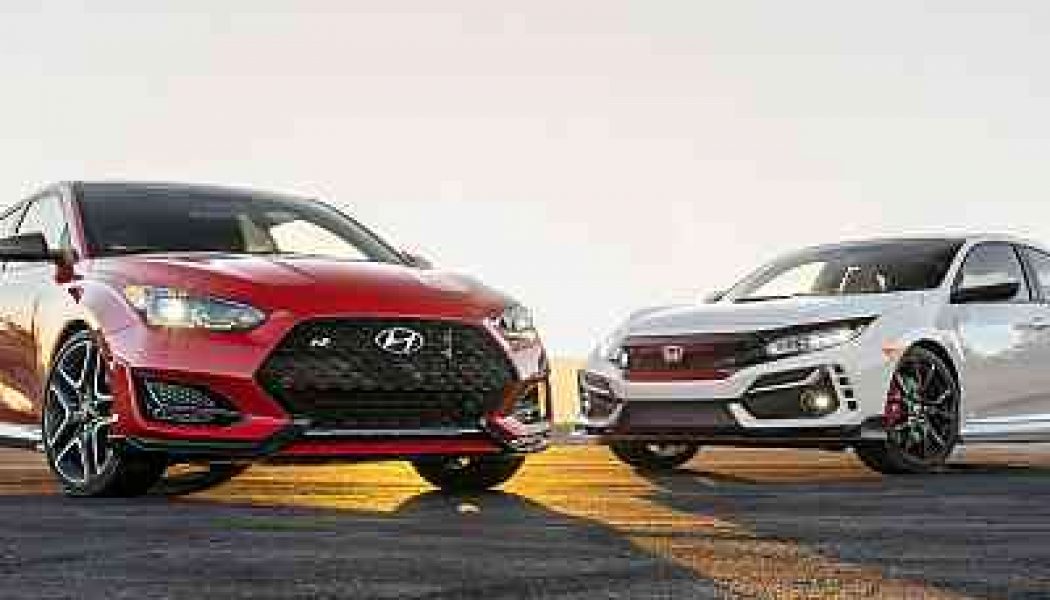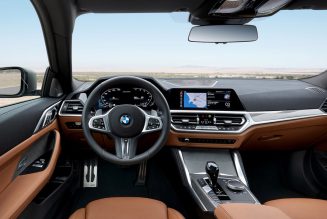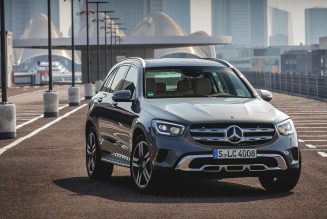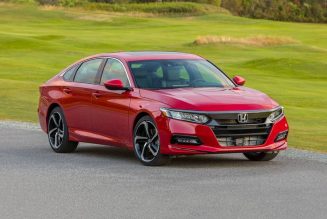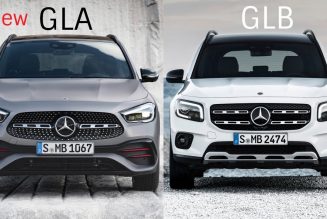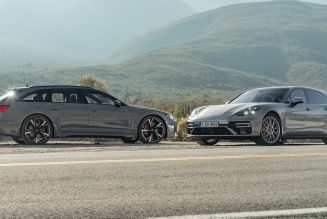Ask a MotorTrend staffer which midsize sedan is best, and the reply “Honda Accord” will come as quickly and reflexively as a leg kick follows a tap to the patellar tendon. The Honda leads our midsize sedan rankings, and for good reason. But for many buyers, an Accord or a Toyota Camry is just too obvious a choice, or too ubiquitous. For decades the corporately linked Korean automakers have offered more features and tech for the same or less money, and now they’re even offering bolder designs. Hyundai and Kia also still offer longer warranties than the Japanese nameplates, despite mounting evidence that you may never need it: Kia recently tied for the top spot in J.D. Power’s 2020 Initial Quality Study (Hyundai ranked ninth, Honda 19th, Toyota 20th), and Consumer Reports just ranked Hyundai sixth for reliability, just behind Honda (Toyota second, Kia 15th). But which of these high-style Korean midsize sedans is the worthiest Accord alternative? To help you decide, we bring you the Hyundai Sonata versus the Kia K5, which you probably know better by its former name, the Kia Optima.
How the Sonata and K5 Compare with an Accord
Size-wise the Koreans measure within tenths of an inch of an Accord in most exterior dimensions. Inside, the Koreans offer 9 percent more front and 13-14 percent less rear legroom, and just a bit less trunk space (16.0 versus 16.7 cubic feet). We’re comparing two mainstream midlevel trims: the Sonata’s SEL plus versus the K5 EX model, which align most closely with the Accord EX-L grade. Honda’s smaller 1.5-liter turbo produces 12 more horses but 3 fewer lb-ft than the Hyundai-Kia 1.6-liter turbo. The Accord gets a CVT; Hyundai and Kia share a more conventional eight-speed automatic. Performance is even closer than the exterior dimensions.
Hyundai and Kia’s base prices start about $3,000 lower, but our test cars are optioned up to near price parity. (Honda offers very few factory options.) Notable differences: The Accord EX-L gets real leather upholstery while the Koreans make do with “leatherette,” but Hyundai and Kia both get a 10.3-inch infotainment screen with navigation (only top Accord Touring offers nav, on a smaller 8.0-inch screen), side airbags in the rear seat, and a panoramic sunroof (Honda offers neither). Our Kia additionally boasts a heated steering wheel (not offered by Honda), vented seats (Touring only), and a wireless phone charger (a $350 dealer-installed option on Accord). But Honda’s greatest cost advantage is its stellar retained value. Our IntelliChoice partners peg five-year depreciation at 46 percent for an Accord EX-L versus 55 percent for our Sonata and 58 percent for the K5’s Optima EX Premium predecessor. As such, predicted five-year total cost of ownership is $2,500-$4,850 lower for the Honda.
Hyundai Sonata vs. Kia K5: Interior Ambiance, Space, and Comfort
These two cars seem cast against type. We expected the Hyundai to be the more refined, mature, staid offering and the Stinger-sibling Kia to be the more enthusiast-oriented of the two. But these interiors flip that expectation on its head. The Sonata’s all-black cabin features seats with suede inserts and red accent piping and stitching, its steering wheel features prominent thumb rests and shift paddles, and the console-mounted shifter is push-button operated. The reconfigurable all-digital instrument cluster offers a Sport mode with red gauges featuring a slanted font to suggest speed. By contrast, the K5 features light gray leatherette seats and armrests set against a black dash and door panels, all accented by classy open-pore matte-finish faux wood that sweeps from the dash onto the front and rear door panels. The A/C vents—even the one in back—are framed by structural-looking brushed-nickel material with fluting along the bottom edges. It’s a much more traditional, luxurious look with a traditional, old-school shifter and analogue gauges flanking a small driver info screen.
A scant 0.4-inch advantage in wheelbase affords the Kia K5 an commensurate advantage in rear legroom over the Sonata, and it somehow packages 2-plus inches more hip room front and rear. But sitting in both cars, they feel equally spacious and especially roomy in back. Their seats offer similar levels of support and cushioning, but the Kia seems way more luxurious—especially in the rear. There’s that lovely wood, both rear seat backs feature leatherette map pockets, and two USB ports are provided for charging passenger devices. The somber monotone black Sonata ambiance (no other color is available on SEL Plus) is only broken by scant red seat accents and a bright metal strip on the doors. There’s only a single mesh map pocket on the passenger side front seat back, and passengers must fight over a single USB jack.
All four of the Kia’s door armrests features a small raised lip toward the front. “It is easy to grab, and it’s the kind of thoughtful detail that sets a vehicle apart,” Detroit editor Alisa Priddle said. Both cars boast 12-speaker Bose Centerpoint audio systems, each providing a novel “sounds of nature” feature that can play ambient background noises, including lively forest, open air café, warm fireplace, snowy village, calm sea waves, and rainy day (beware, those last two may trigger your bladder). Oh, and on the subject of sounds, the Sonata plays you a lovely orchestral stanza when you switch it on or off.
Where the Sonata pulls slightly ahead again is in feature content. The dual-zone climate controls feature futuristic digital temperature readouts inside the adjuster knobs. That fully configurable instrument cluster provides much more information and visual pizazz; the infotainment screen is programmed to deliver more information, including things like graphs of acceleration and deceleration, speed distribution histograms, and detailed trip info. The K5 screen mostly just shows navigation, audio info, and/or phone screen mirroring. Hyundai also offers a digital key function that can allow your phone (or another authorized phone) to function as the key.
Hyundai Sonata vs. Kia K5: Instrumented Performance
It shouldn’t surprise anyone that with a mere 53-pound weight difference separating two cars powered by identical 180-hp, 195-lb-ft 1.6-liter turbocharged I-4 engines mated to eight-speed automatic transmissions with identical gearing, a single tenth of a second or mph is all that separates these two. It’s interesting to note that averaging the acceleration performance of every mainstream variant example of the eight sedans we rank in our Buyer’s Guide yields a standard deviation of within 0.2 second to 60 mph and through the quarter mile, with our Koreans very nearly nailing those exact average numbers. The Kia’s 124-foot stop from 60 also nails the class average.
Both our test cars wore Pirelli P Zero All Season tires, but broader contact patches on the Hyundai (245/40R19 versus 235/45R18) gave it a notable leg up in handling, reinforcing our earlier impressions of the Sonata being the sportier of these two cars. Max lateral grip of 0.85 g beats the Kia’s 0.83 and the class average 0.82, but its figure-eight time of 27.0 seconds at 0.64 overall average g is 0.4 second quicker than the Kia and 0.6 quicker than average.
How Do the Sonata and K5 Feel on the Road?
Numbers only tell half the story, and frankly it’s a story that mainstream midsize sedan buyers aren’t much interested in. So how do the cars feel on the road? Detroit editor Priddle and I drove the cars back to back without sampling their swifter 2.5-liter turbo Sonata N Line and K5 GT variants, as our California colleagues had. Without that context, we both found the performance to be perfectly adequate, with the transmissions swiftly kicking down and allowing us to easily pass slow-moving trucks on our two-lane driving loop. Features editor Christian Seabaugh, however, felt that although the “engine is plenty peppy for the 0-30 mph city cycle, it runs out of steam in 55-75 passing.” We wish the Sport mode gear shifting algorithm would hold onto higher gears longer in turns (which made us appreciate the Hyundai’s shift paddles), but we keep reminding ourselves that these aren’t sport sedans.
Every editor who experienced this 1.6-liter turbo faulted its noise and vibration, with many using adjectives like hoarse, course, and grainy. Seabaugh again: “Did I mention the engine shakes the seats and wheel at idle?” Priddle found that “in sport, the K5’s engine is not as loud or throttle response as immediate when you stomp on it, nor is the thrust as aggressive as in the Sonata.” The consensus was that the Hyundai had the more pleasing engine note when set to Sport mode.
Handling impressions separated our two test cars more than acceleration could. The Sonata’s tires generated notably more grip and less tire squeal than the K5’s. “The K5 suspension feels a little bouncier,” Priddle said. “I just felt like I could be more confident and handle the turns at speed better in the Sonata.”
The flip side of that sharper handling is some cost to ride quality. “The highway ride limits its abilities as a road trip car, but I’d happily sacrifice a perfect ride for the extra curb appeal,” buyer’s guide director Zach Gale said of the Sonata’s 19s.
Both cars permit some road texture to read through to the steering wheel, which we largely found endearing. The Hyundai’s Comfort steering mode seemed to better replicate the V-notch hydraulic steering assist used to provide around straight ahead, with effort ramping up linearly for the first few degrees of turning in either direction. That notch shrinks in Sport mode.
Hyundai Sonata vs. Kia K5: The Bottom Line
These cars are so closely matched in all objective family sedan measures that a personal preference could easily sway a decision in either direction for reasons of exterior styling, interior glamour, or perceived sportiness. Similarly, if you’re interested in a hybrid model, Hyundai (and Honda and Toyota) covers that niche, and those who need all-wheel drive can shop Kia (and Nissan, Subaru, or Toyota). But between the two cars we’re testing, we feel that the added technology and feature content, the more confident handling and sport-oriented chassis and interior, and the three-year/36,000-mile complimentary maintenance plan that only Hyundai offers in this class (Toyota covers two years/25,000 miles) tip the scales in favor of the Hyundai Sonata.
| POWERTRAIN/CHASSIS | 2021 Hyundai Sonata (1.6T SEL Plus) | 2021 Kia K5 EX |
| DRIVETRAIN LAYOUT | Front-engine, FWD | Front-engine, FWD |
| ENGINE TYPE | Turbocharged I-4, alum block/head | Turbocharged I-4, alum block/head |
| VALVETRAIN | DOHC, 4 valves/cyl | DOHC, 4 valves/cyl |
| DISPLACEMENT | 97.5 cu in/1,598 cc | 97.5 cu in/1,598 cc |
| COMPRESSION RATIO | 10.5.0:1 | 10.5:1 |
| POWER (SAE NET) | 180 hp @ 5,500 rpm | 180 hp @ 5,500 rpm |
| TORQUE (SAE NET) | 195 lb-ft @ 1,500 rpm | 195 lb-ft @ 1,500 rpm |
| REDLINE | 6,500 rpm | 6,500 rpm |
| WEIGHT TO POWER | 18.5 lb/hp | 18.1 lb/hp |
| TRANSMISSION | 8-speed automatic | 8-speed automatic |
| AXLE/FINAL-DRIVE RATIO | 3.24:1/2.06:1 | 3.38:1/2.14:1 |
| SUSPENSION, FRONT; REAR | Struts, coil springs, anti-roll bar; multilink, coil springs, anti-roll bar | Struts, coil springs, anti-roll bar; multilink, coil springs, anti-roll bar |
| STEERING RATIO | 13.3:1 | 13.3:1 |
| TURNS LOCK-TO-LOCK | 2.7 | 2.6 |
| BRAKES, F; R | 12.8-in vented disc; 11.8-in disc, ABS | 12.0-in vented disc; 11.2-in disc, ABS |
| WHEELS | 8.0 x 19-in cast aluminum | 7.5 x 18-in cast aluminum |
| TIRES | 245/40R19 94W Pirelli P Zero All Season (M+S) | 235/45R18 94V Pirelli P Zero All Season (M+S) |
| DIMENSIONS | ||
| WHEELBASE | 111.8 in | 112.2 in |
| TRACK, F/R | 63.4/63.7 in | 63.7/64.0 in |
| LENGTH x WIDTH x HEIGHT | 192.9 x 73.2 x 56.9 in | 193.1 x 73.2 x 56.9 in |
| TURNING CIRCLE | 35.9 ft | 36.0 ft |
| CURB WEIGHT | 3,322 lb | 3,259 lb |
| WEIGHT DIST, F/R | 60/40% | 61/39% |
| SEATING CAPACITY | 5 | 5 |
| HEADROOM, F/R | 38.4/38.4 in | 38.4/37.4 in |
| LEGROOM, F/R | 46.1/34.8 in | 46.1/35.2 in |
| SHOULDER ROOM, F/R | 57.9/56.1 in | 58.0/56.1 in |
| CARGO VOLUME | 16.0 cu ft | 16.0 cu ft |
| TEST DATA | ||
| ACCELERATION TO MPH | ||
| 0-30 | 2.8 sec | 2.8 sec |
| 0-40 | 4.1 | 4.0 |
| 0-50 | 5.8 | 5.8 |
| 0-60 | 7.8 | 7.8 |
| 0-70 | 10.1 | 10.1 |
| 0-80 | 13.2 | 13.3 |
| 0-90 | 16.9 | 17.0 |
| PASSING, 45-65 MPH | 4.0 | 4.1 |
| QUARTER MILE | 16.0 sec @ 87.5 mph | 16.0 sec @ 87.4 mph |
| BRAKING, 60-0 MPH | 126 ft | 124 ft |
| LATERAL ACCELERATION | 0.85 g (avg) | 0.83 g (avg) |
| MT FIGURE EIGHT | 27.0 sec @ 0.64 g (avg) | 27.4 sec @ 0.62 g (avg) |
| TOP-GEAR REVS @ 60 MPH | 1,700 rpm | 1,600 rpm |
| CONSUMER INFO | ||
| BASE PRICE | $28,645 | $28,955 |
| PRICE AS TESTED | $31,500 | $32,355 |
| STABILITY/TRACTION CONTROL | Yes/Yes | Yes/Yes |
| AIRBAGS | 9: Dual front, f/r side, f/r curtain, driver knee | 9: Dual front, f/r side, f/r curtain, driver knee |
| BASIC WARRANTY | 5 yrs/60,000 miles | 5 yrs/60,000 miles |
| POWERTRAIN WARRANTY | 10 yrs/100,000 miles | 10 yrs/100,000 miles |
| ROADSIDE ASSISTANCE | 5 yrs/Unlimited miles | 5 yrs/60,000 miles |
| FUEL CAPACITY | 15.9 gal | 15.8 gal |
| EPA CITY/HWY/COMB ECON | 27/37/30 mpg | 27/37/31 mpg |
| ENERGY CONS, CITY/HWY | 125/91 kW-hrs/100 miles | 125/91 kW-hrs/100 miles |
| CO2 EMISSIONS, COMB | 0.63 lb/mile | 0.63 lb/mile |
| RECOMMENDED FUEL | Unleaded regular | Unleaded regular |
